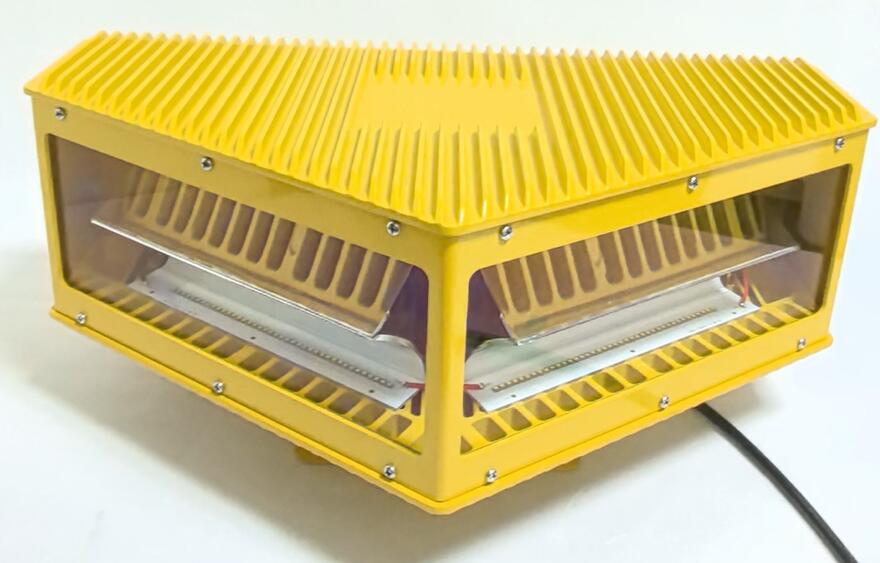Aviation Lights on Buildings: Guardians of Urban Airspace Safety
As cities grow vertically with ever-taller skyscrapers, aviation lights on buildings have become an essential safety feature in modern urban planning. These specialized lighting systems create a protective interface between ground structures and air traffic, preventing collisions while enabling the continued growth of our cities. This article examines the critical role, technical specifications, and innovative solutions shaping this vital aspect of aviation safety infrastructure.
The Necessity of Aviation Lights in Urban Environments
The proliferation of high-rise buildings creates three significant challenges for air traffic management:
Increased Collision Risks for low-flying aircraft and emergency helicopters
Complex Airspace Navigation in dense urban corridors
Regulatory Compliance with international aviation safety standards

Aviation lights on buildings address these challenges by:
Providing 24/7 visual identification of structures
Creating recognizable patterns for pilot orientation
Adapting to various weather and visibility conditions
Supporting both daytime and nighttime operations
Technical Specifications and Lighting Classes
1. Low-Intensity Lighting Systems
Applied to buildings under 150 feet (45 meters)
Typically red, steady-burning LED fixtures
Minimum intensity of 32.5 candela
Standard spacing of 50 feet vertically
2. Medium-Intensity Solutions
For structures between 150-500 feet (45-150 meters)
Red or white flashing configurations
Intensity range of 2,000-20,000 candela
| Aviation Lights on Buildings |
Synchronized flash patterns (30-40 flashes/minute)
3. High-Intensity Warning Systems
Required for buildings exceeding 500 feet (150 meters)
White strobe lights with 20,000-270,000 candela
Dual lighting systems combining red and white
Special considerations for supertall (>300m) structures
| Aviation Lights on Building |
Installation Best Practices
Proper implementation of aviation lights on buildings requires:
Structural Integration
Rooftop mounting configurations
Intermediate level spacing requirements
Façade-mounted solutions for signature buildings
Consideration of architectural aesthetics
Operational Reliability
Redundant power systems
Automatic failure detection
Weather-resistant enclosures
Easy maintenance access
Light Pollution Mitigation
Directional light control
Adaptive intensity adjustment
Shielded fixtures
Compliance with dark sky initiatives
Regulatory Framework and Compliance
Global standards governing building lighting include:
ICAO Annex 14 Volume I (International standards)
FAA Advisory Circular 70/7460-1L (U.S. requirements)
CASA MOS 139 (Australian regulations)
EASA Certification Specifications (European standards)
Key compliance aspects:
Height-based lighting requirements
Approved color specifications
Flash pattern synchronization
Documentation and certification processes
Innovations in Building Lighting Technology
Modern solutions incorporate cutting-edge features:
1. Smart Lighting Systems
Automatic brightness adjustment
Weather-responsive operation
Remote monitoring capabilities
2. Sustainable Solutions
Solar-assisted power systems
Energy-efficient LED technology
Thermal management innovations
3. Advanced Materials
Anti-glare lens technology
Corrosion-resistant housings
Vibration-dampening mounts
Special Considerations for Signature Buildings
Architecturally significant structures require customized approaches:
Aesthetic Integration with building design
Discreet Fixtures that maintain visual appeal
Dynamic Lighting systems serving dual purposes
Heritage Building compliance challenges
Emerging Trends and Future Developments
The next generation of aviation lights on buildings will likely feature:
Integrated Detection Systems combining lighting with radar
AI-Powered Predictive Lighting adjusting to air traffic patterns
Augmented Reality Markers visible through pilot HUDs
Self-Powered Wireless Units with energy harvesting
Aviation lights on buildings represent a critical intersection of urban development and aviation safety. As our cities continue to reach new heights, these systems must evolve to meet increasingly complex airspace challenges. The future lies in smart, sustainable solutions that provide uncompromising safety while respecting urban aesthetics and environmental considerations.
Building owners, architects, and aviation authorities must collaborate to implement lighting systems that not only meet current regulations but anticipate future needs. By embracing technological innovations and best practices, we can ensure our growing cities remain safe for all airspace users while maintaining their architectural integrity and visual appeal.
